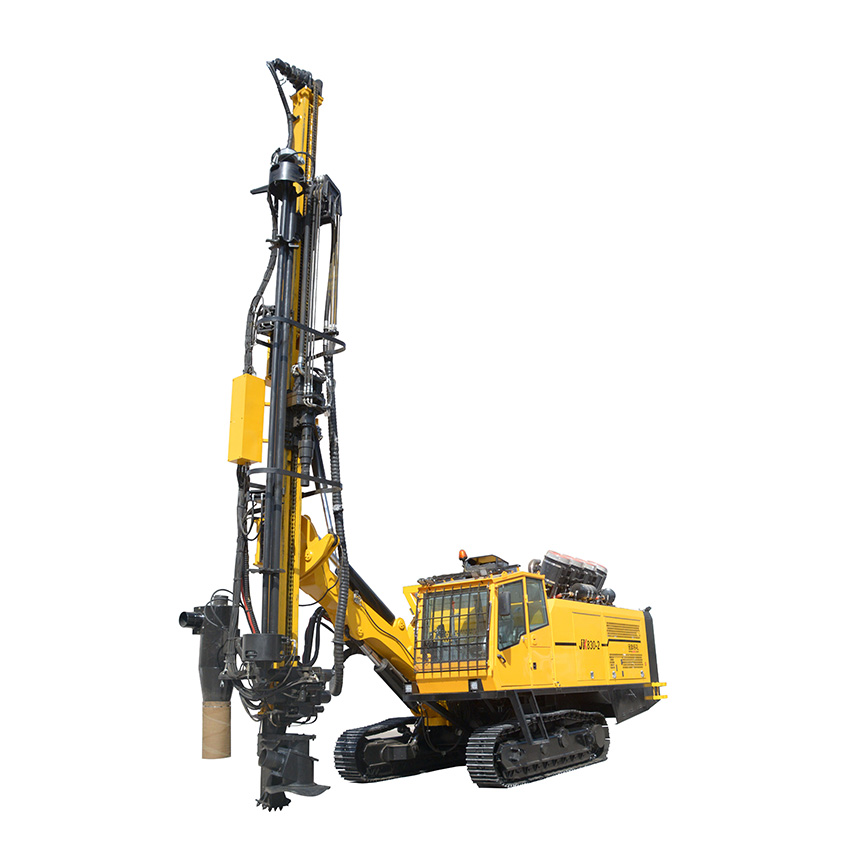Feb. 13, 2025
1. What challenges do drilling rigs face when starting in winter? Besides technical aspects, external temperature significantly impacts the starting process. The cold winter climate presents various challenges:
⑴ In cold environments, the ambient temperature falls, causing an increase in engine oil viscosity. This leads to higher friction resistance in moving parts, reducing the starting speed and complicating the ignition process.
⑵ With decreasing temperatures, battery capacity also declines, which hampers the starting speed further.
⑶ A drop in starting speed causes increased air leakage and enhanced heat dissipation from the cylinder wall. Consequently, the temperature and pressure of the compressed air significantly lower, prolonging the diesel ignition delay or even preventing combustion in severe instances.
⑷ Additionally, at low temperatures, diesel viscosity increases, reducing its injection speed. This is paired with lower air swirl speed, temperature, and pressure at the end of compression, negatively affecting diesel atomization quality. The result is difficulty in forming a combustible gas mixture with the air, complicating ignition and combustion and potentially leading to a failure to start.
2. What factors contribute to optimal starting performance of a Jinke drilling rig?
⑴ Sufficient starting speed is crucial. Higher speeds reduce gas leakage in the cylinder, shorten the time taken for compressed air to transfer heat to the cylinder wall, and minimize heat loss, thus elevating the gas temperature and pressure by the end of compression. Generally, a speed of over 100 r/min is preferred.
⑵ The cylinder must demonstrate good sealing properties. This enhances the retention of heat and pressure, ensuring sufficient combustion conditions. It is necessary for the compression pressure not to fall below 80% of the standard value.
⑶ Properly matched clearances between engine components and moving parts are essential, and adequate lubrication must be maintained.
⑷ The battery should possess sufficient capacity, and the starting circuit must function correctly.
⑸ The volume of starting oil must meet requirements, the quality of injection should be good, and the injection timing should be accurate.
⑹ Utilizing fuel that fulfills required specifications is important.
3. Diagnosing and addressing mechanical failures when the crankshaft fails to rotate upon starting the drilling rig. If the starting system is intact, pressing the start switch produces a sound from the starter, but the crankshaft remains stationary, indicating a mechanical fault. Possible reasons include:
① Poor meshing of the starter and flywheel teeth. If the ring gear and starter gear do not engage properly, it can lead to tooth damage or uneven wear. When more than three teeth are severely worn or damaged, gear meshing can become impossible.
② Cylinder sticking. If the engine overheats and is then shut down, rapid cooling may cause the piston rings to bind to the cylinder.
③ Locked crankshaft. A malfunctioning lubrication system or low engine oil levels can result in dry friction, ultimately locking the crankshaft and preventing ignition.
④ Sticking of the injection pump plunger.

4. Analyzing the drilling rig that rotates upon starting, yet fails to start (no exhaust smoke). If no smoke is emitted upon engine starting and no combustion sounds are heard, this typically indicates an issue with the oil circuit. The analysis includes the following possibilities:
① Insufficient fuel in the tank.
⑵ Clogged fuel filter and oil-water separator.
③ Dysfunction in the low-pressure oil circuit preventing oil supply.
④ The fuel injection pump's failure to pump oil.
⑤ Air trapped within the oil circuit.
⑥ Inaccurate valve timing leads to open valves during the piston’s compression stroke, allowing fresh air to escape and hence preventing startup.
⑦ A malfunctioning solenoid valve in the fuel injection pump that keeps the system closed, obstructing diesel from entering the high-pressure chamber.
5. Identifying causes for exhaust pipe emission of excessive white smoke during difficult or failed startups. When the engine struggles to start and releases copious white smoke, it can be attributed to:
① Water presence in the diesel, which vaporizes in the cylinder and exits as water vapor through the exhaust.
② Loose cylinder head bolts or damaged cylinder gaskets, leading to cooling water infiltration into the cylinder.
③ Possible cracks or sand holes in the cylinder block or head allowing water entry, which then vaporizes and exits.
6. Difficulty starting the rig accompanied by gray-white smoke emissions. This indicates the production of diesel vapor during startup difficulties:
① Low engine temperatures preventing efficient diesel evaporation and combustion.
② Injector malfunctions causing poor atomization.
③ Delay in fuel supply timing.
④ Insufficient fuel supply leading to a lean mixture.
⑤ Excessive cylinder leakage preventing the necessary ignition temperature from being achieved at the end of compression.
7. When the rig struggles to start or fails, producing black smoke from the exhaust pipe. Black smoke suggests incomplete combustion of diesel for the following reasons:
① Poor quality diesel.
② Obstructions in air intake, typically caused by a blocked air filter.
③ Early adjustment of injection timing.
④ Poor sealing of the injector needle valve leading to fuel dripping.
⑤ Insufficient injection pressure.
⑥ Overfueling by the injection pump, resulting in worsened combustion.
⑦ Low cylinder pressure translating into poor atomization.
105
0
0
All Comments (0)
Previous: 7 Essential Benefits of Waste Plastic Pyrolysis Plant for Sustainable Recycling
Next: Top Benefits of Using a Portable Oxygen Concentrator 5 Litres
If you are interested in sending in a Guest Blogger Submission,welcome to write for us!
Comments